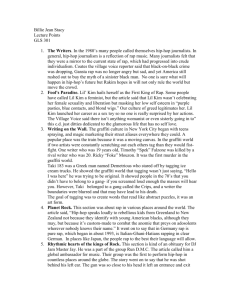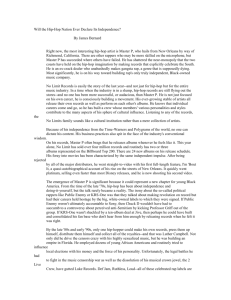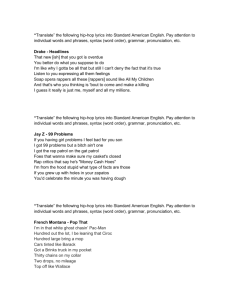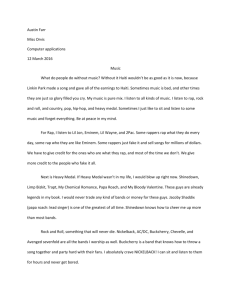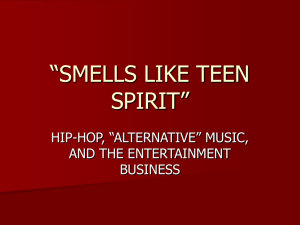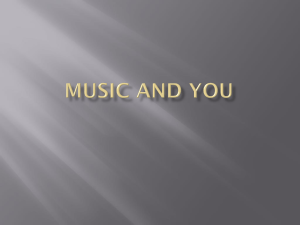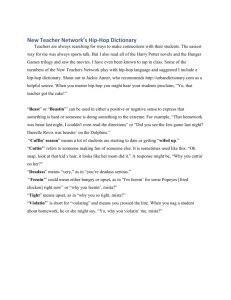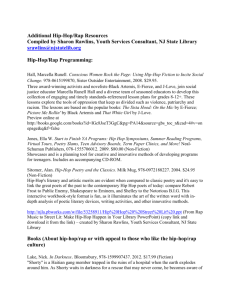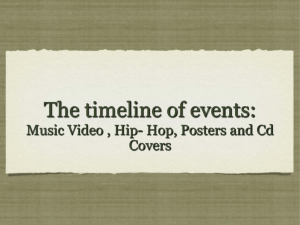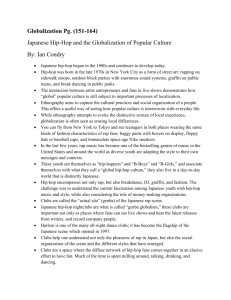Key Terms and Definitions
advertisement
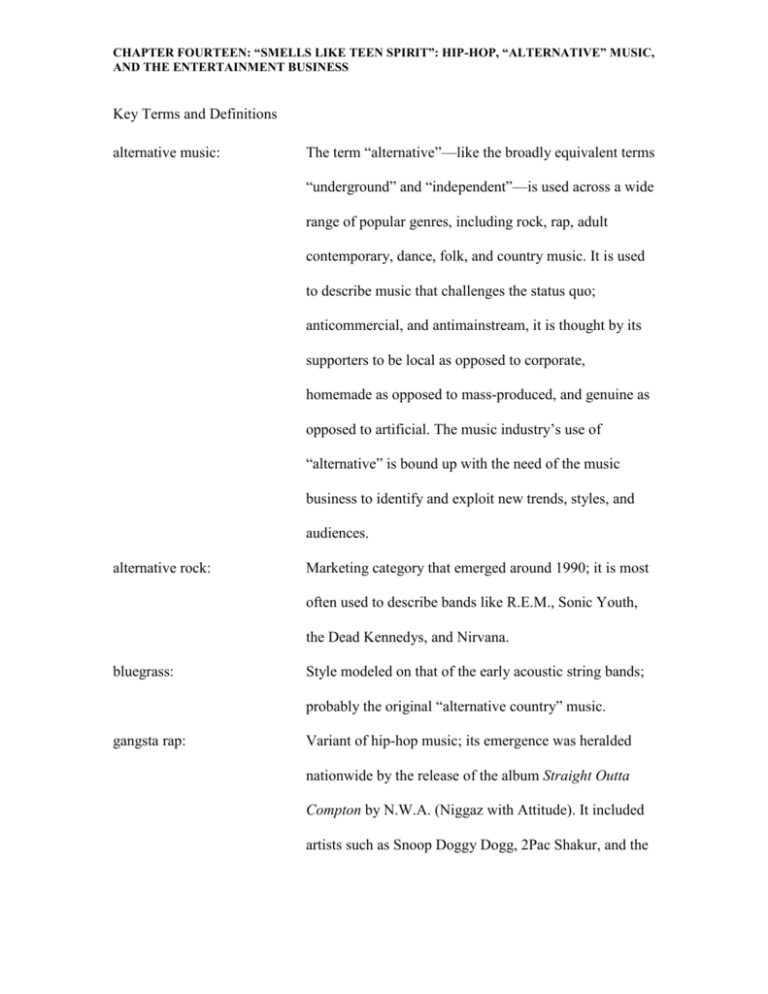
CHAPTER FOURTEEN: “SMELLS LIKE TEEN SPIRIT”: HIP-HOP, “ALTERNATIVE” MUSIC, AND THE ENTERTAINMENT BUSINESS Key Terms and Definitions alternative music: The term “alternative”—like the broadly equivalent terms “underground” and “independent”—is used across a wide range of popular genres, including rock, rap, adult contemporary, dance, folk, and country music. It is used to describe music that challenges the status quo; anticommercial, and antimainstream, it is thought by its supporters to be local as opposed to corporate, homemade as opposed to mass-produced, and genuine as opposed to artificial. The music industry’s use of “alternative” is bound up with the need of the music business to identify and exploit new trends, styles, and audiences. alternative rock: Marketing category that emerged around 1990; it is most often used to describe bands like R.E.M., Sonic Youth, the Dead Kennedys, and Nirvana. bluegrass: Style modeled on that of the early acoustic string bands; probably the original “alternative country” music. gangsta rap: Variant of hip-hop music; its emergence was heralded nationwide by the release of the album Straight Outta Compton by N.W.A. (Niggaz with Attitude). It included artists such as Snoop Doggy Dogg, 2Pac Shakur, and the CHAPTER FOURTEEN: “SMELLS LIKE TEEN SPIRIT”: HIP-HOP, “ALTERNATIVE” MUSIC, AND THE ENTERTAINMENT BUSINESS Notorious B.I.G. grunge rock: Regional style of alternative rock from Seattle that blended heavy metal guitar textures with hardcore punk. Bands from Seattle included Green River, Mudhoney, Pearl Jam, Nirvana, and Soundgarden. hard core: Extreme variation of punk, pioneered during the early 1980s by bands in San Francisco (the Dead Kennedys) and Los Angeles (the Germs, Black Flag, X, and the Circle Jerks). house music: Named after the Warehouse, a popular gay dance club in Chicago, it was a style of techno dance music. Many house recordings were purely instrumental, with elements of European synth-pop, Latin soul, reggae, rap, and jazz grafted over an insistent dance beat. By the mid-1980s, house music scenes had emerged in New York and London, and in the late 1980s, the genre made its first appearances on the pop charts, under the guise of artists such as M/A/R/R/S and Madonna. old school New York hip- Describes the earliest styles of hip-hop that came out of hop: New York City in the 1970s and 1980s. qawwali: Genre of mystical singing practiced by Sufi Muslims in Pakistan and India. In traditional settings, the lead singer (or qawwal) alternates stanzas of traditional poetic texts CHAPTER FOURTEEN: “SMELLS LIKE TEEN SPIRIT”: HIP-HOP, “ALTERNATIVE” MUSIC, AND THE ENTERTAINMENT BUSINESS (sung in unison with a choir) with spectacular and elaborate melodic improvisations, in an attempt to spiritually arouse his listeners and move them into emotional proximity with the Divine. rave: One of the main venues for techno. Semipublic event modeled partly on the be-ins of the 1960s counterculture. techno: Style of electronic dance music that originated in the Detroit area during the 1980s. thrash: Style that blended the fast tempos and rebellious attitude of hardcore with the technical virtuosity of heavy metal guitar playing. West Coast rap: Style of rap that originated in California; it differed from “old school” New York hip-hop in a number of regards. The edgy, rapid-fire delivery of Melle Mel and RunD.M.C. remained influential but was augmented by a smoother, more laid-back style of rapping. The dialects of southern California rappers also contributed to the distinctive flavor of West Coast rap. And if the verbal delivery of West Coast rap was sometimes cooler, the content of the MCs’ recitations themselves became angrier, darker, and more menacing. world music or world beat: Heterogeneous category that includes artists from Africa, the Near East, and Asia—the ultimate margins of the CHAPTER FOURTEEN: “SMELLS LIKE TEEN SPIRIT”: HIP-HOP, “ALTERNATIVE” MUSIC, AND THE ENTERTAINMENT BUSINESS American music industry.
